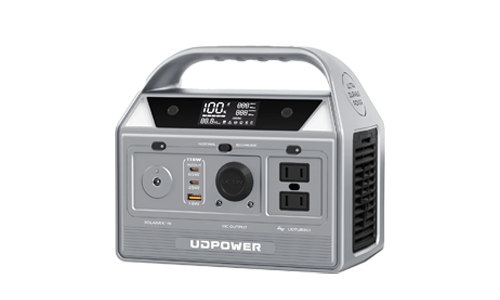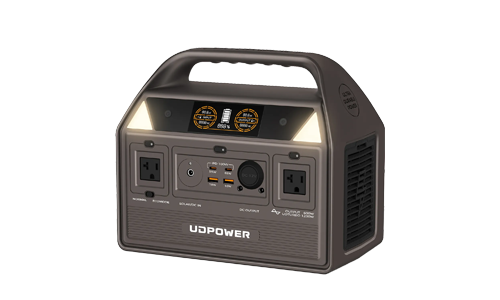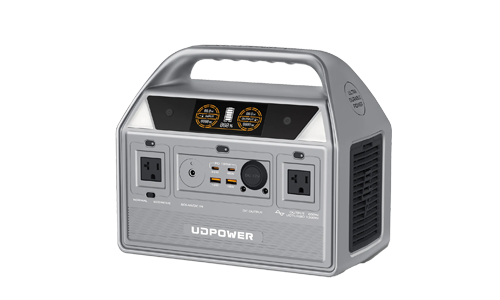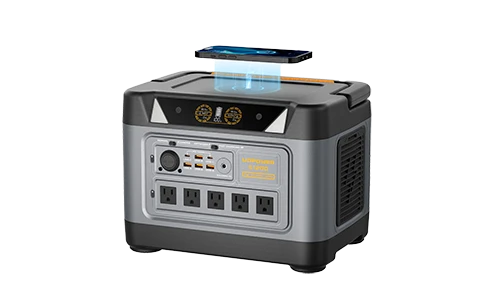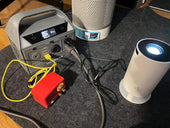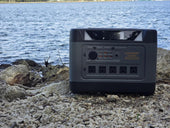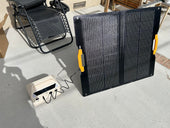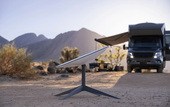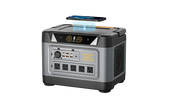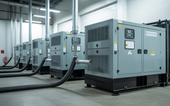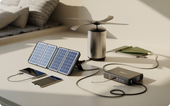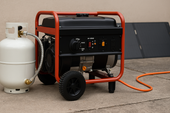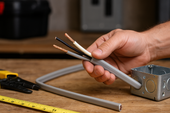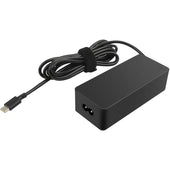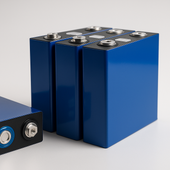How Many Amps Does a Ceiling Fan Use?
William ZacharyShort answer: most residential ceiling fans on a U.S. 120-volt circuit draw roughly 0.2–1.0 amps while running. You can get the exact number for your fan in seconds using Amps = Watts ÷ Volts. This guide shows you typical ranges by fan type and size, real-world examples, and safe ways to keep a fan running during an outage.

Quick answer
Typical running amps: 0.2–1.0 A for a standard 44–56" ceiling fan at medium/high speed with no light on a 120V circuit. High-efficiency DC-motor fans can use far less (often under 0.5 A). Very large industrial/HVLS fans can exceed 1 A depending on wattage.
Always check your fan’s label or spec sheet for actual watts at each speed, then use Amps = Watts ÷ 120.
Why amp draw varies
Motor type
DC-motor (ENERGY STAR®) fans are especially efficient and commonly run at lower watts than older AC-motor fans at the same airflow.
Fan size & speed
Bigger diameters and higher speeds move more air and use more watts—so amps go up. At low speed, many fans sip single-digit watts.
Accessories
Light kits, remote receivers, and smart modules add watts (and amps). LED lights add a small amount; legacy bulbs add more.
Start-up “inrush” is brief and modest for ceiling fans compared with appliances like compressors; the running amps are what matter for planning.
Amps by fan type & size (typical ranges on 120V)
| Fan type (examples) | Typical running watts | Approx. amps @ 120V | Notes |
|---|---|---|---|
| ENERGY STAR® DC-motor, 44–60" | 10–40 W (low to high) | 0.08–0.33 A | Some certified models list ~14–20 W at high speed. |
| Standard AC-motor, 52" (no light) | 50–100 W | 0.42–0.83 A | Common range for traditional 3–5 blade fans. |
| Low-profile (hugger) | 40–70 W | 0.33–0.58 A | Flush mounts vary widely by airflow target. |
| Outdoor / damp-rated, 52–72" | 50–120 W | 0.42–1.00 A | Larger blades & weatherproofing may raise draw. |
| Large industrial / HVLS (residential use is rare) | 150–1500 W | 1.25–12.5 A | Motor/controller dependent; check nameplate. |
These are ballpark values; check your specific model for exact watts/amps at each speed.
How to calculate amps (with real examples)
- Find watts on the fan’s label/manual (often listed per speed).
- Use U.S. line voltage for most homes: 120 V.
- Calculate: Amps = Watts ÷ 120.
Example A — 52" AC fan
If the label says 60 W at high speed: 60 ÷ 120 = 0.50 A.
Example B — Efficient DC fan
If high speed is 16 W: 16 ÷ 120 = 0.13 A.
Quick reference (120V)
15 W → 0.12 A · 30 W → 0.25 A · 50 W → 0.42 A · 75 W → 0.62 A · 100 W → 0.83 A
Do fan lights change amps?
Yes. Add the light kit’s wattage to the fan’s wattage, then divide by 120. For example, a 50 W fan with a 15 W LED light draws roughly (50+15) ÷ 120 = 0.54 A. Modern integrated LEDs are typically 10–20 W; older bulbs can be much higher.
Circuits & safety basics
- Lighting circuits: Many ceiling fans are on 15 A or 20 A breakers. A single fan’s running draw (often under 1 A) is usually small relative to the circuit capacity.
- Code & wiring: Follow the manufacturer’s instructions and local code. If you’re not sure about box support, wire size, or shared loads, hire a licensed electrician.
- Measuring draw: A clamp meter around the fan’s hot conductor can show true running amps; a plug-in watt meter works for portable fans.
Powering a fan during outages
You have two safe approaches:
1) Portable fan on AC outlets
A portable box or pedestal fan is simple to run from a power station. Estimate runtime with Runtime ≈ (Battery Wh × 0.85) ÷ Fan W.
- UDPOWER C400 — 256Wh, 400W pure sine, surge 800W; two USB-C PD ports (65W + 35W, 100W total); 2× AC outlets.
- UDPOWER S1200 — 1190Wh, 1200W rated (1800W max), 5× AC outlets, 2× USB-C PD up to 100W, < 10 ms UPS, up to 400W solar input.
Example runtimes (approx.): 50 W fan → C400 ≈ 4.35 h; S1200 ≈ 20.23 h. 16 W efficient fan → C400 ≈ 13.6 h; S1200 ≈ 63.2 h.

2) Whole-home or circuit backup
To run hard-wired ceiling fans from a portable power station, use a transfer switch or inlet with interlock installed by a licensed electrician. Never backfeed a panel with improvised cords.
For solar recharging, a UDPOWER 210W foldable panel (IP65, ≥22% conversion) can replenish a power station during daylight.
UDPOWER options are mentioned for convenience—choose any reputable solution that matches your wattage/runtime needs.
FAQ
Is 0.5 amps normal for a 52" fan?
Yes. Many standard 52" fans draw around 50–60 W at high speed, which is ~0.42–0.50 A on 120V.
Why does my efficient fan show only 10–20 W?
High-efficiency, ENERGY STAR–certified DC-motor fans can deliver strong airflow at very low wattage, especially on lower speeds.
How many ceiling fans can be on one 15 A circuit?
Electrically, the sum of running amps for typical residential fans often stays well under 15 A, but circuits may feed lights and receptacles too. Follow code, account for total load, and consult an electrician if in doubt.
Do smart modules or remotes change amp draw?
They add a small standby wattage. It’s usually negligible during operation compared with the motor’s draw.


